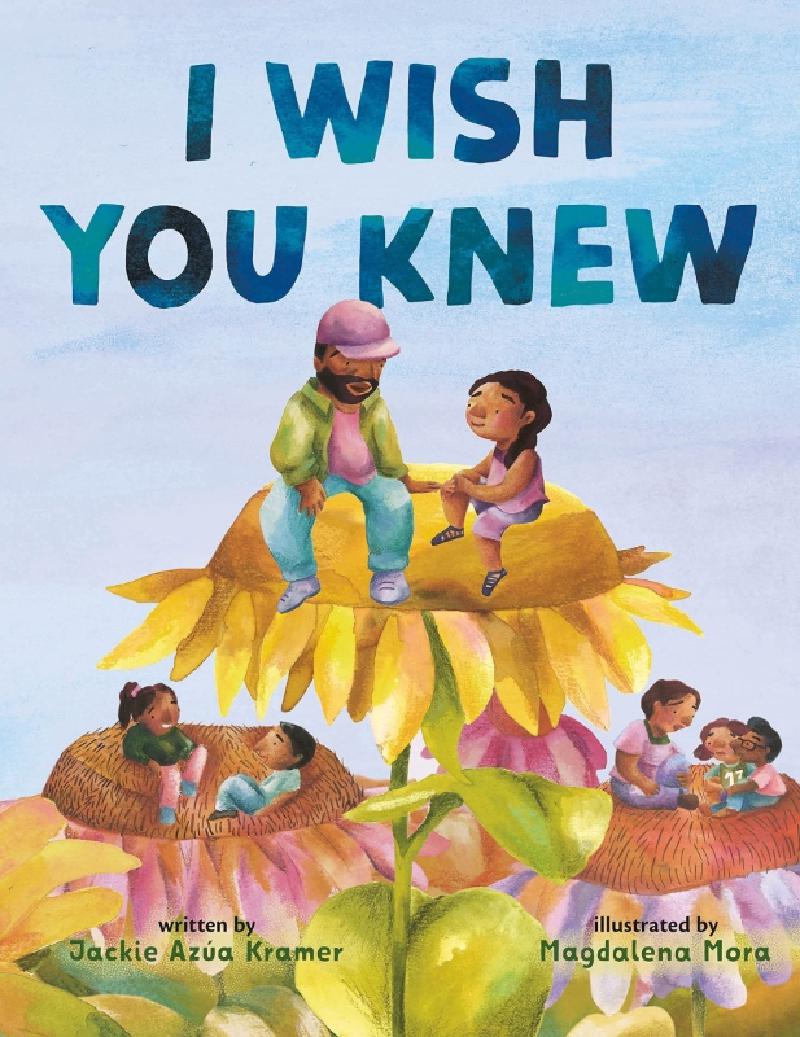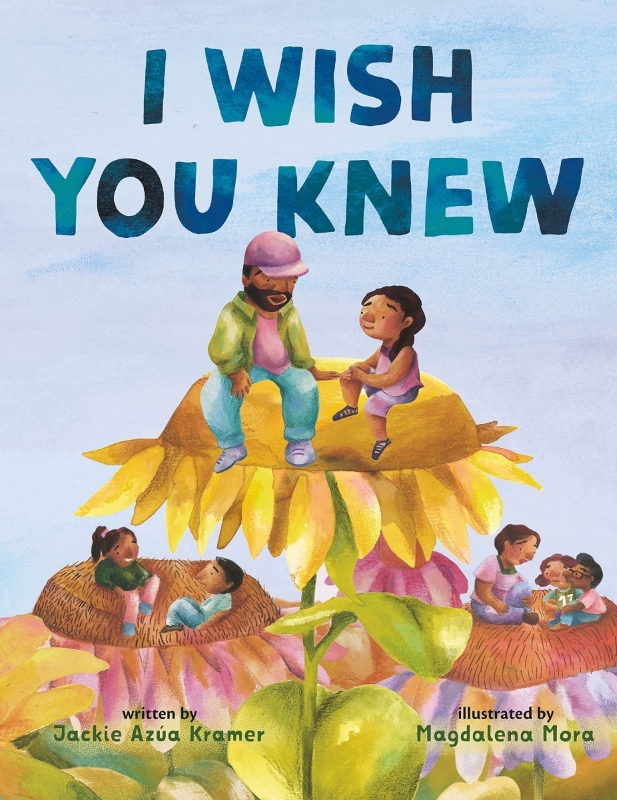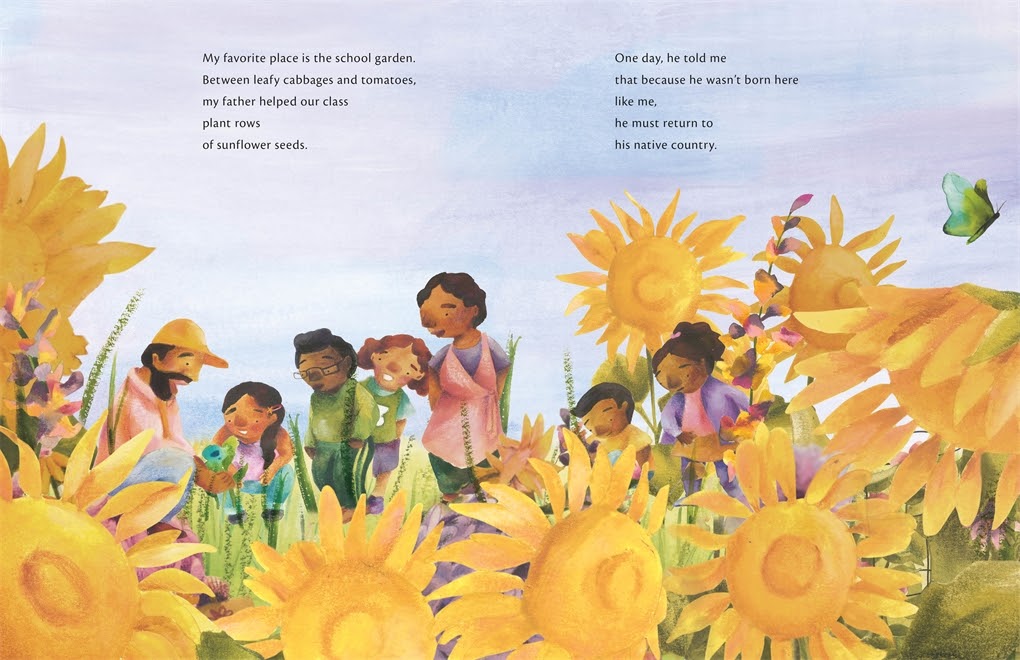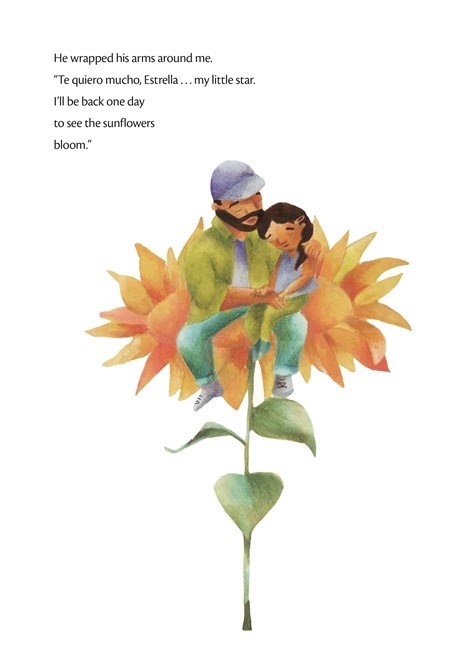- ISBN 978-1250814784 (Ojalá Supieras)
Curriculum links
- Personal, social, health and economic education (PSHE)
- Class community building
Publisher’s summary
When Estrella’s father has to leave because he wasn’t born here, like her,
she misses him. And she wishes people knew the way it affects her. At home. At
school.
Always.
But a school wrapped around a hundred-year-old oak tree is the perfect place to share and listen. Some kids miss family, some kids are hungry, some kids live in shelters. But nobody is alone.
A story about deportation, divided families, and the importance of community in the midst of uncertainty.
In Environmental Education
This story is about sharing and empathy. The students in the story share some of the burdens they have been carrying, creating a classroom community which feels safe and supportive. While the students in the story share very personal burdens, students can of course have worries about the wider world aswell. Climate or eco-anxiety is a feeling of fear or being overwhelmed by the enormity of the challenge posed by climate change and other environmental problems. Environmental education is keen to teach kids about the natural world and the problems which humans have created. But it is easy to forget that learning about these problems can, and perhaps should, create some anxiety. It is important to acknowledge that the problems are scary and worrying. It is also important to provide students with strategies for managing those feelings so that they do not become overwhelming.
The beautiful illustrations for this story are reminders of how calming or restorative green spaces and nature can be. Plants feature on virtually every page. The big oak tree at the centre of the school is solid and reliable presence throughout the book. Sunflowers brighten even the sad moment when Estralla’s father must leave the country. Nature can also provide a kind of ‘soft’ fascination, holding attention with movement, sound, and infinite detail, in a way which is mentally resorative. Looking closely throughout the book and you can see kids having fun playing in the lush school grounds and looking at all the different creatures living there.
Early in the story, and again at the end, the class plants sunflower seeds. The collective act reinforces the community built they’ve built together and let her know that she is not alone. Planting a seed is a simple act, and it is one of hope and patience which can teach kids many lessons. Kids learn patience and come to understand that some things cannot be rushed. Planting seeds can also be a ‘safe’ way to encounter dissapointment. Not every seed may grow, and some seedlings may die, but planting many seeds ensures that some will bloom.
I wish you knew
That we’ll be together soon.
Till then,
my friends and teacher
help me plant sunflower seeds,
and we wait
for them
to bloom.
Discussion ideas
Sharing circles - This is a way of talking through topics or resolving problems. See the links below for more details on how to use sharing circles.
-
The power of sharing circles - expandedlearning360-365.com
-
About sharing circles - PassTheFeather.ca
-
A whole school approach to using circle time - PDF from Kent County Council
Waiting and patience - Kids can share about occasions they’ve had to wait for something. They might also think about things that cannot be rushed and why. Share strategies for being patient.
Activity ideas
Watercolour paintings - The illustrations make use of a variety of watercolour techniques. While there are many details in the pictures which show off the artist’s skill, the illustrations make use of the wonderful ’loose’ quality which watercolours can have meaning the effects are very achievable even for a kid’s first try with the medium. Kids can look for how different techniques are used to show textures. Washes for the sky. Wet in wet for lawns and carpets. Dry brushing for blades of grass.
Silouette picture frames - On the pages where students are shareing the illustrations are framed by white silouettes which focus your attention on each scene. Kids can consider the effect the white space has on how the illustrations make them feel. Afterwards they can make their own illustrations using the same technique, drawing something they would like to share on inside the frame. Kids might also write an artists’ statement about their work to further practice expressing themselves.
Grow sunflowers - Big, bright, cheerful blooms. Sunflowers are great to grow with kids of any age, but particularly younger ones as the seeds are of a good size to hold and plant. There are many varieties to choose from, smaller dwarf varieties are suitable for pots or planters. If you would be growing them in the ground, feel free to grow the giant varieties! Try growing them with climbers like sweet peas. These are annuals, so plant them in the spring for late summer-early autumn flowers. Don’t cut the plants down when they finish flowering, their seeds are well loved by birds and squirrels! Dried stems can be used in spring to make bug hotels.
Plant an outdoor sharing space - Allow students to choose flowers and plants to go in outdoor planters arranged to create a space large enough for the class to sit together in a circle for sharing. Consider presenting the class options which will have foliage or flowers through Spring and early Summer. To provide instant impact, at the start of the school year the class might use plants grown from seeds they planted at the end of the previous school year, along with bulbs which will grow up the following spring. Or the planter might have a central small tree or shrub which will always be there, and each year’s class could plant smaller flowers around it.
Further exploration of themes in the book
Supporting students
Teaching Students in Tough Situations - Advancement Courses
Ecotherapy and benefits of exposure to nature
Ecotherapy – A Forgotten Ecosystem Service: A Review - Frontiers in Psychology (Academic journal article)
Nature and mental health; Ideas to try in Nature - Mind.org
The soft fascination of nature - NRPA.org
More about the book
About the author - jackieazuakramer.com
Interview with the author and illustrator about the book - Las Musas



